It takes a lot of work to get a perfect wildlife photograph. This is by far the hardest form of photography — it takes time, knowledge, money, and specialized equipment to get it all just right.
I’ve been camping and hiking in the backcountry since I was a teenager. And I’ve learned how to navigate the wilderness, and what safety precautions are needed when I’m out here. When you’re out in the backcountry, you need to be prepared for bears, because these thousand-pound beasts can very quickly ruin a trip. Especially if you’re out to get photos of bears like this, you will need to bring some supplies so that you don’t scare a bear while you’re on the tail.
I love landscape and wildlife photography because it gives me adventure, discovery, creativity, and freedom. These are some of the things that make me come alive. Wildlife photography is not easy learning the skills to do it right, takes time and personal investment. And you typically only get one really good photo opportunity from an entire multi-day trip.
I have been planning this trip for months and the stakes are high. It took 13 hours of driving to get here, mostly on backcountry, dirt roads, which required a week off of work.
I’ve been training and practicing my photography skills for years, but I’m in a moving boat. Hand-holding the camera I’ve been visualizing the perfect shot of a full-grown bear facing the camera and running. I want a photo that is tack sharp, correctly exposed, and with a powerful composition, do I have what it takes to get the shot I want when and if the opportunity presents itself.
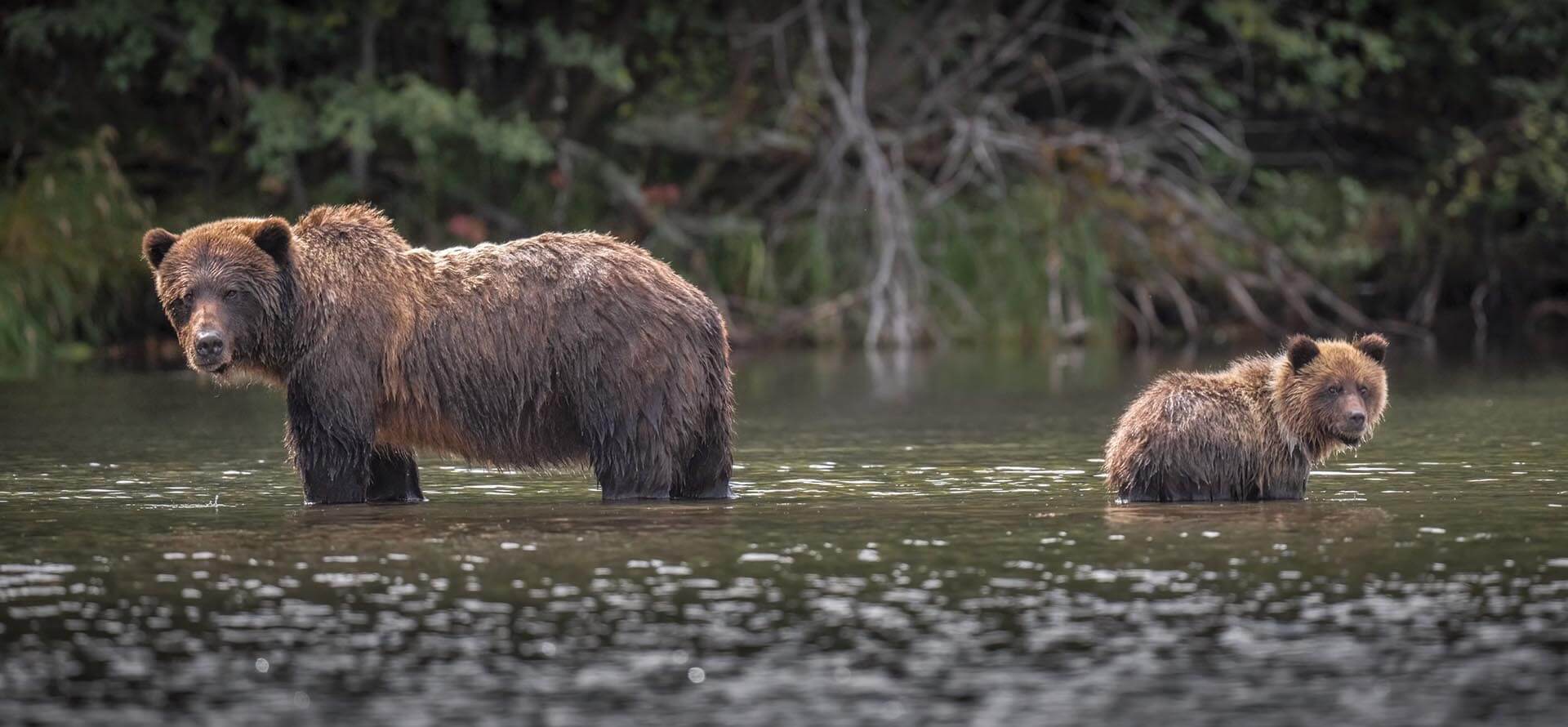
Where did I get this photograph?
The best time of year to spot bears is during the Salmon Run. This is when salmon travel up the streams in large numbers to lay eggs in nutrient-rich waters. The salmon often exhaust themselves during this journey, making it a good source of food for bears, birds, and other wildlife along the way. The nutrients from the fish are also one of the reasons why forests in the Pacific Northwest are so lush and diverse compared to those inland.
This happens at different times of the year depending on the river and the type of salmon. For this photograph, I went to the Chilcotins in central British Columbia. It’s filled with glacier-fed blue rivers along the edge of BC Wine Country.
The region is very remote. It takes a lot of work to find a good location, and you have to travel in hard to reach areas. This means that you’re going to need something bigger than a Honda Civic to get out there. Preferably an all-wheel-drive vehicle with enough space to store equipment and at least a week’s worth of food.
We’re also going along the rivers. So we hired a guide to take us through the region to have the best chance at spotting bears along the river. It’s always a good investment to hire a guide to take you out along the water because they’ll know exactly where and when to go to spot a bear eating the salmon. They’ll also know how to navigate the waters, and will ensure that you’re safe.
There’s a lot of money on the line with wildlife photography. So hiring a guide is the way to ensure you’ll come away with at least one good photograph.
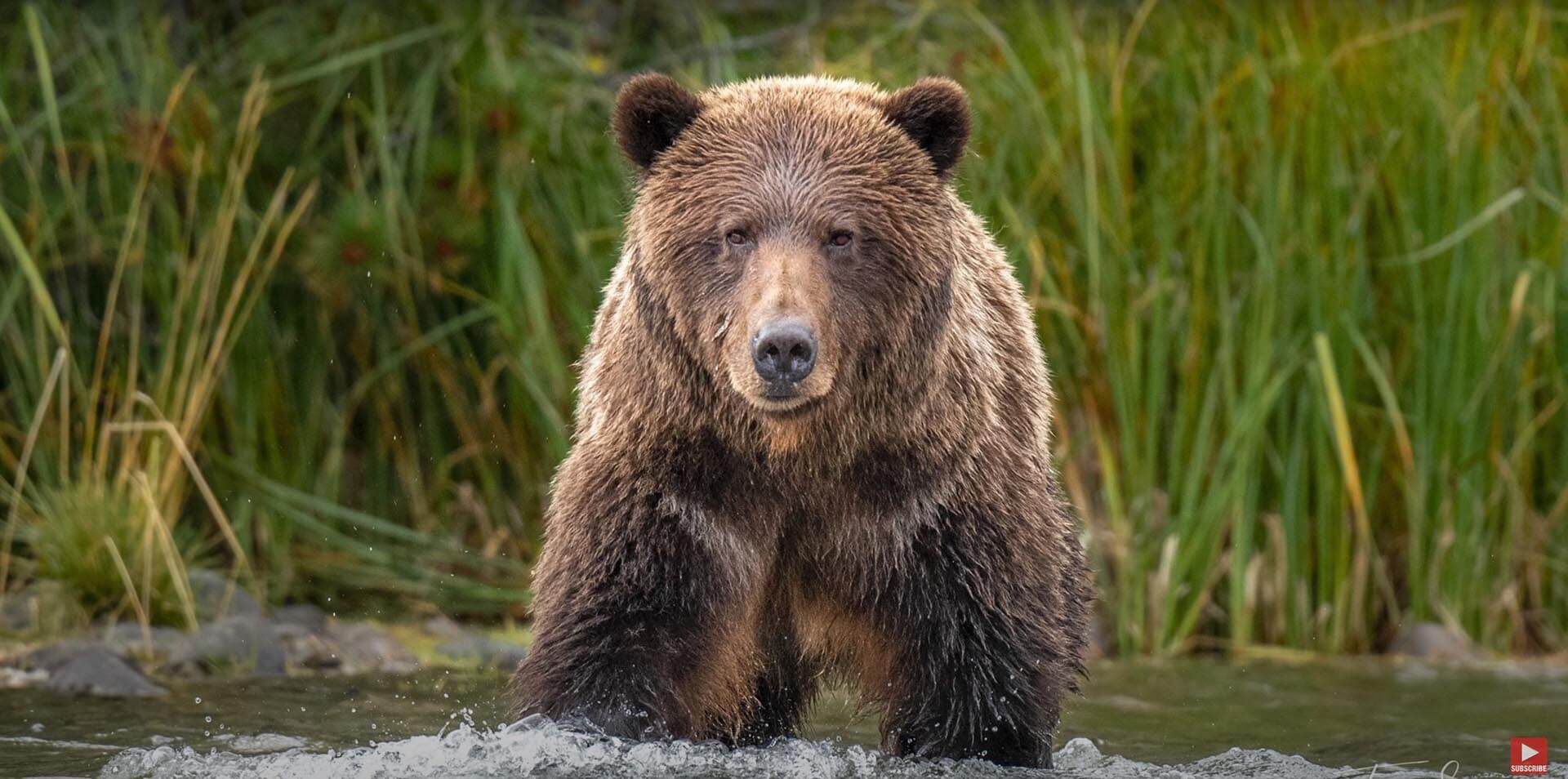
What kind of photography equipment do I use for this photo?
Wildlife photography is demanding. This is the only form of photography where you’ll absolutely need high-end equipment to get the shot. Opportunities come and go in seconds, and if your camera is still focusing when it happens, it could be over and never happen again.
These days, I’m using a Nikon D850. This camera is one of the fastest focusing cameras in the world, and it has never let me down. Paired with a Nikkor 500mm f/5.6, I’m able to fill the frame with wildlife in the distance, and blur the background for a pleasing effect. This way I’m able to stay back and fill the frame without having to get close to the bear, or other wildlife.
Wildlife photographers love lenses that can blur the background. But getting a lens like that can have a huge cost. For example, going from the Nikkor 500mm f5.6 to the 500mm f4 — just one-stop brighter — is triple the price and twice the weight.
On this trip, we were taking photographs from a boat. This meant that I needed to get a fast shutter speed so there wouldn’t be any motion blur. Longer lenses especially require fast shutters, but being on a boat that’s rocking back and forth in the water adds complexity to that mix. It’s not possible to use a tripod, so handholding is the only way.
The 600mm f/4 has built-in image stabilization that helps counteract a lot of this motion, but I still need to shoot faster than 1/1000th of a second to get a sharp photo on such a high megapixel camera.
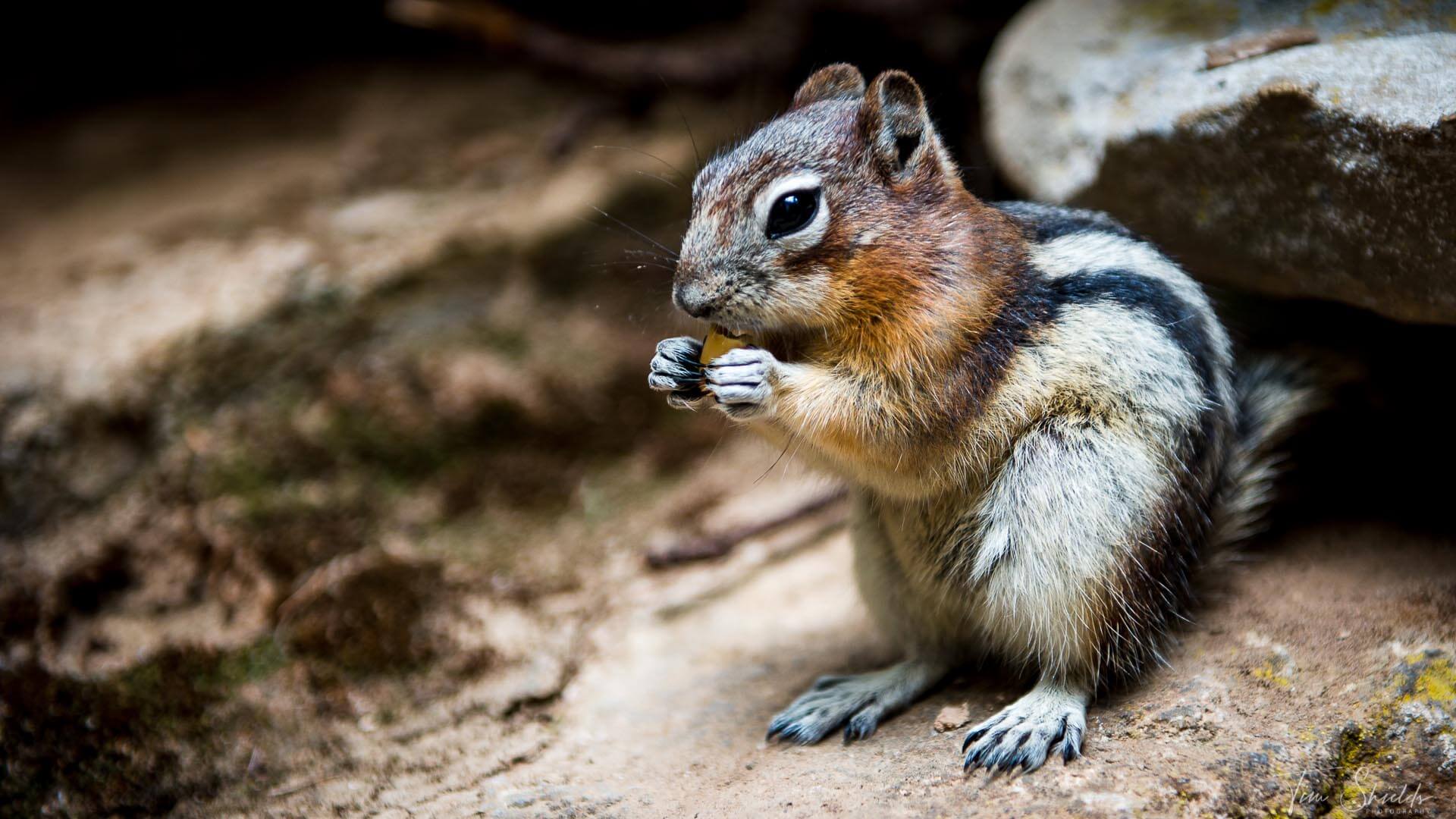
Can I get close enough to wildlife to use a shorter lens?
This is extremely important when you’re dealing with bears and even more tame wildlife like elk and moose. They may look calm, and like they don’t care about your presence. But they don’t live by the same laws humans do — they can attack at a moment’s notice. No photograph is ever worth the risk for you or the wildlife around you.
In fact, this grizzly bear, tired of our presence, charged at us to scare us off! Luckily we were far enough away, and on a boat so she couldn’t get to us. She ran full tilt for 2 seconds before calling it off. And those were the seconds that I captured my favorite photograph of this entire trip. But I can’t stress enough — if we weren’t at a safe distance and in a safe place, this could have a much worse outcome.
Never approach wildlife, and especially don’t try to feed them. Feeding wild grizzlies is one of the main reasons for them to come close to cities and towns. They learn to become habituated to humans and approach them without fear. When this starts happening regularly, they can become aggressive. When that happens and relocation doesn’t work, they usually have to be shot by rangers. This happens every year in the national parks near me, and it’s always sad to hear.
These wildlife lenses cost more than $6,000 USD. If that’s not something that you can afford, there are options to rent these lenses for much less than the cost of purchasing them outright. That can give you the freedom to shoot without having to open your pockets until you’re able. Book the lenses as early in advance as possible, to ensure its availability for your trip.
How can I plan to take a photo of a bear?
The secret to taking stunning wildlife photographs is always planning. Just like in landscape photos, you’ll have better luck if you know exactly what you want to capture. Unfortunately, with this type of photography, you can’t plan for the perfect weather, but you can give yourself the best shot by knowing the kind of scene, habitat, and animal you want to take a photo of. And of course, you need your camera settings prepared for when it happens.
It took time, but because we knew that the salmon were running up the stream at this time, we were able to capture them right on the water. Just before winter the bears are out eating up to 100 pounds of salmon per day! The water gave me a clean shot of the bear, where normally they’d be hiding in some grass, in the trees, or another area where they’re difficult to spot.
The mother bear had two cubs with her in the forest. My guide noted that they were around two years old. We watched them for a while, and the mother and two cubs eventually were slightly more comfortable with us being around. The cubs came out and played, and even stole food from each other as they prepared for hibernation.
Then, without warning or provocation, the mother bear charged straight at the boat! It was so sudden, but because I was prepared, I was able to get the shots within two seconds before she stopped on a sandbar at the edge of the water.
In the end, I was very happy with the shots that I got. This mama bear looks incredibly powerful, wild, and majestic, and she is all of those things.
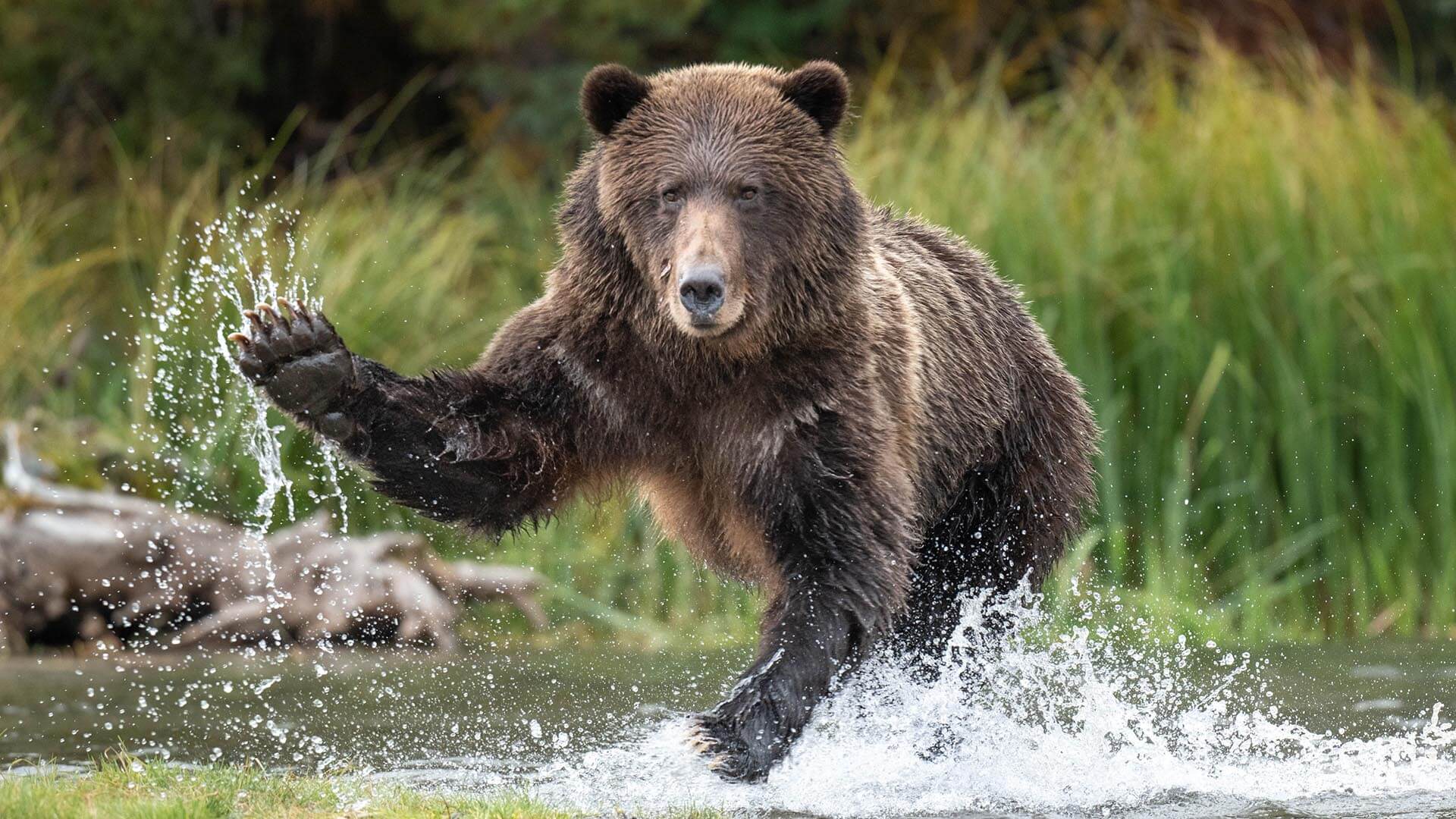
Where do I go to learn more?
This was one of the most incredible experiences I’ve ever witnessed in my photography journey. And in the end, these photographs wouldn’t have happened without using my 4-step system for photography.
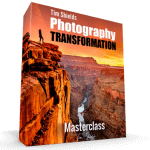 Over the years, I developed this as a way to overcome the challenges of my gear, and it’s helped me see an immense improvement in my own photography! I’ve traveled the world and won many awards because of this system. And I’m giving it away for free along with some other tips and tricks in my online web class! Sign up today to start taking your photography to the next level.
Over the years, I developed this as a way to overcome the challenges of my gear, and it’s helped me see an immense improvement in my own photography! I’ve traveled the world and won many awards because of this system. And I’m giving it away for free along with some other tips and tricks in my online web class! Sign up today to start taking your photography to the next level.

